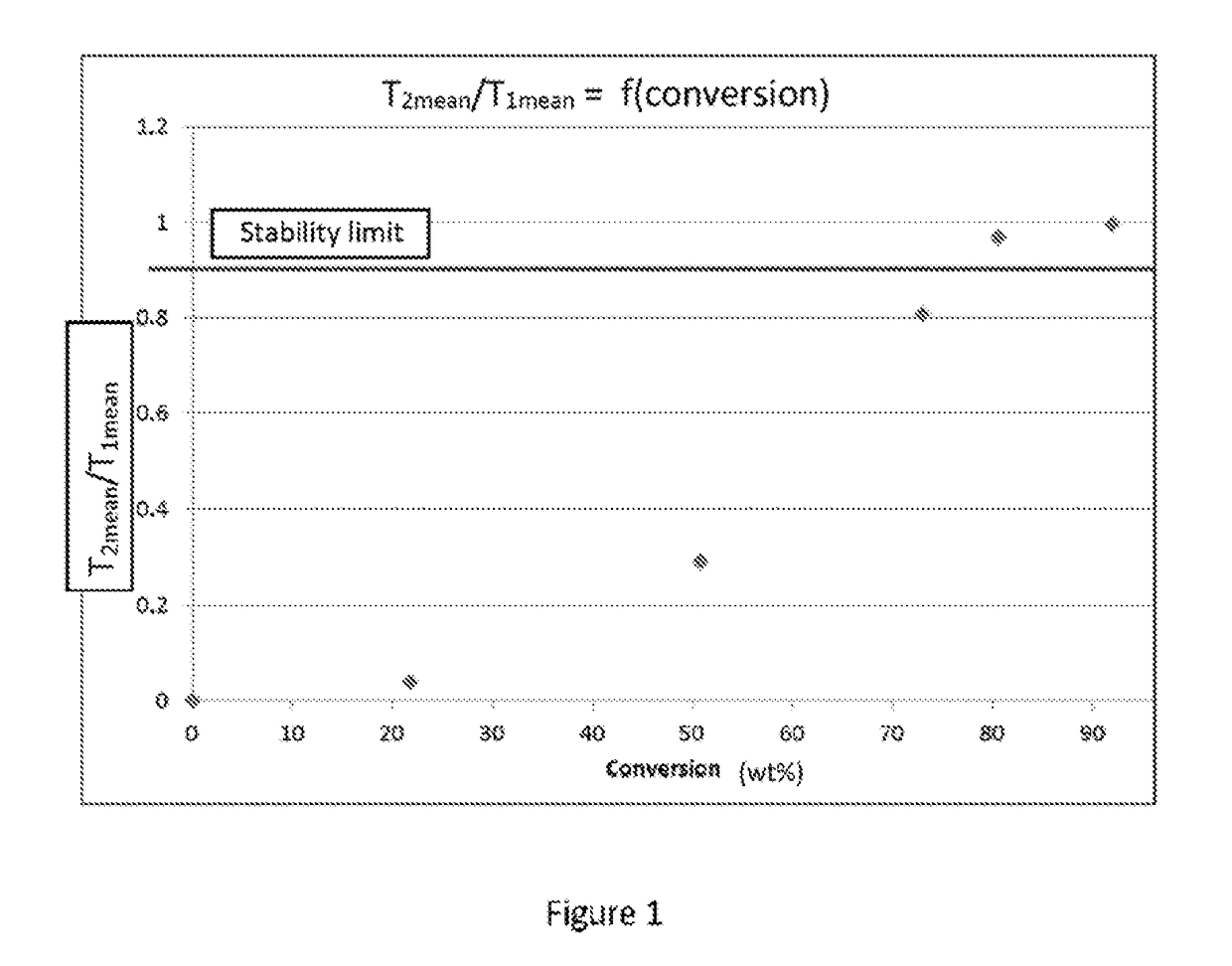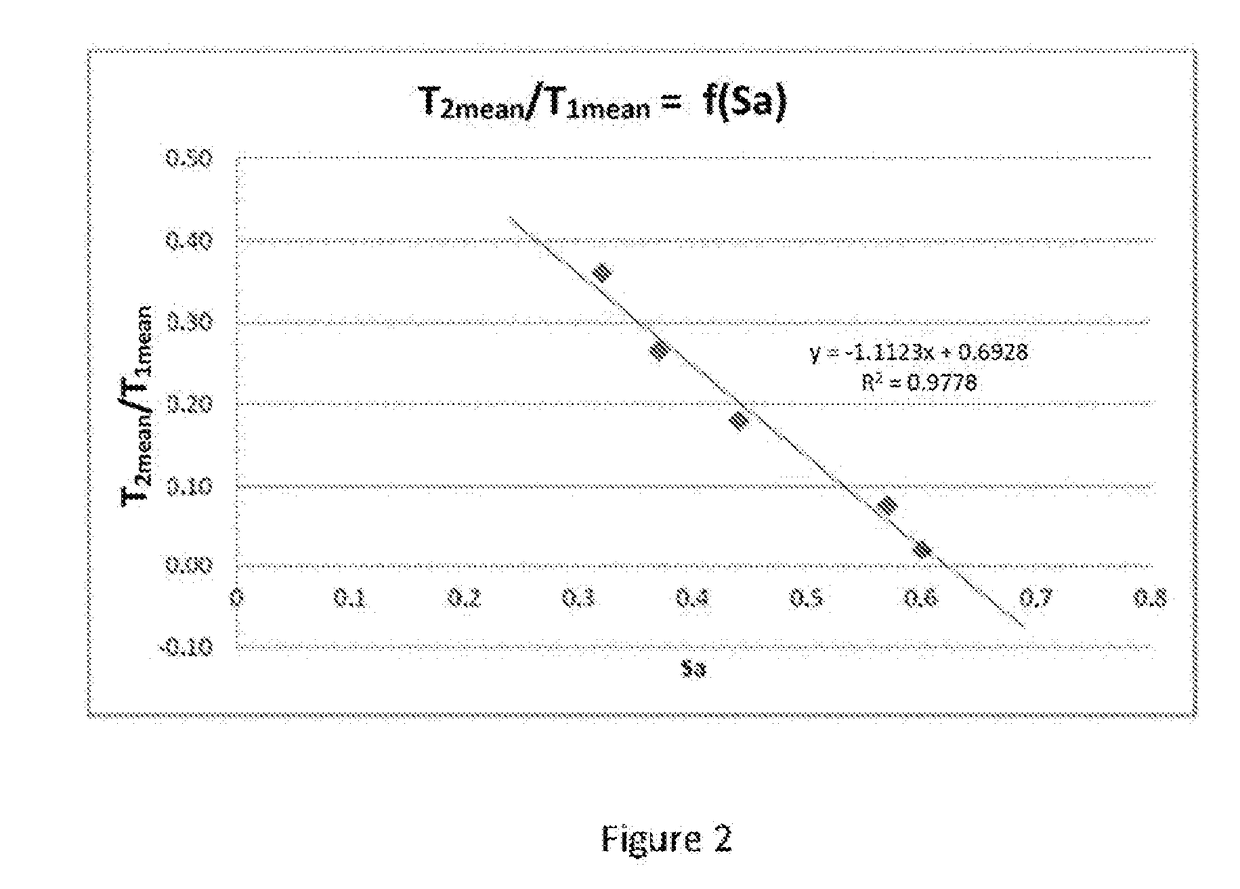Method for Determining the Stability of a Petroleum Product Containing Asphaltenes
- Summary
- Abstract
- Description
- Claims
- Application Information
AI Technical Summary
Benefits of technology
Problems solved by technology
Method used
Image
Examples
examples
[0185]The examples below aim to illustrate the effects of the invention and its advantages, but without limiting the scope thereof.
example a
With a 250° C.+ TLP Derived from a Slurry-Phase Hydroconversion Process
[0186]The estimation of the stability of a 250° C.+ effluent (TLP) derived from a deep conversion process in a slurry reactor will be carried out as follows.
[0187]Preparation of the samples: approximately 1 ml of the effluent / feedstock to be analyzed by NMR is withdrawn and poured into the bottom of an NMR tube. Since the feedstock and the effluents are very viscous at ambient temperature, it is necessary to heat the sample by passing into an oven at 110° C. for at least 5 min, in order to homogenize it and to liquefy it in order to be able to withdraw it.
[0188]The measurements were carried out using a 0.47 T Bruker Minispec MQ20 spectrometer operating at 20 MHz for the proton, equipped with a 10 mm probe and having a dead time of 7 ps. The term “dead time” is understood to mean the time starting from which it is possible to record the signal. The mean duration of the 90° and 180° pulses is respectively 2.6 ps an...
example b
With a Filtered 250° C.+ TLP Derived from a Slurry-Phase Hydroconversion Process
[0204]The estimation of the stability of a filtered 250° C.+ effluent (TLP) derived from a deep conversion process in a slurry reactor will be carried out as follows.
[0205]The preparation of the samples is in accordance with that used in the course of example A.
[0206]The feedstock used to produce TLPs contains from 10% to 20% by weight of asphaltenes. The asphaltenes are completely within the TLPs. After filtration, the content of asphaltenes in the filtered TLP is from 8% to 18% by weight.
[0207]The TLP contains both flocculated asphaltenes and asphaltenes that are at the flocculation limit. If the sample is filtered, the flocculated asphaltenes are removed from the sample and only non-flocculated, and therefore stable, asphaltenes remain.
[0208]In order to carry out filtration, the TLP is diluted in toluene. After dilution, a vacuum filtration is carried out. It is possible to use a glass fiber filter ha...
PUM
 Login to View More
Login to View More Abstract
Description
Claims
Application Information
 Login to View More
Login to View More - R&D
- Intellectual Property
- Life Sciences
- Materials
- Tech Scout
- Unparalleled Data Quality
- Higher Quality Content
- 60% Fewer Hallucinations
Browse by: Latest US Patents, China's latest patents, Technical Efficacy Thesaurus, Application Domain, Technology Topic, Popular Technical Reports.
© 2025 PatSnap. All rights reserved.Legal|Privacy policy|Modern Slavery Act Transparency Statement|Sitemap|About US| Contact US: help@patsnap.com



